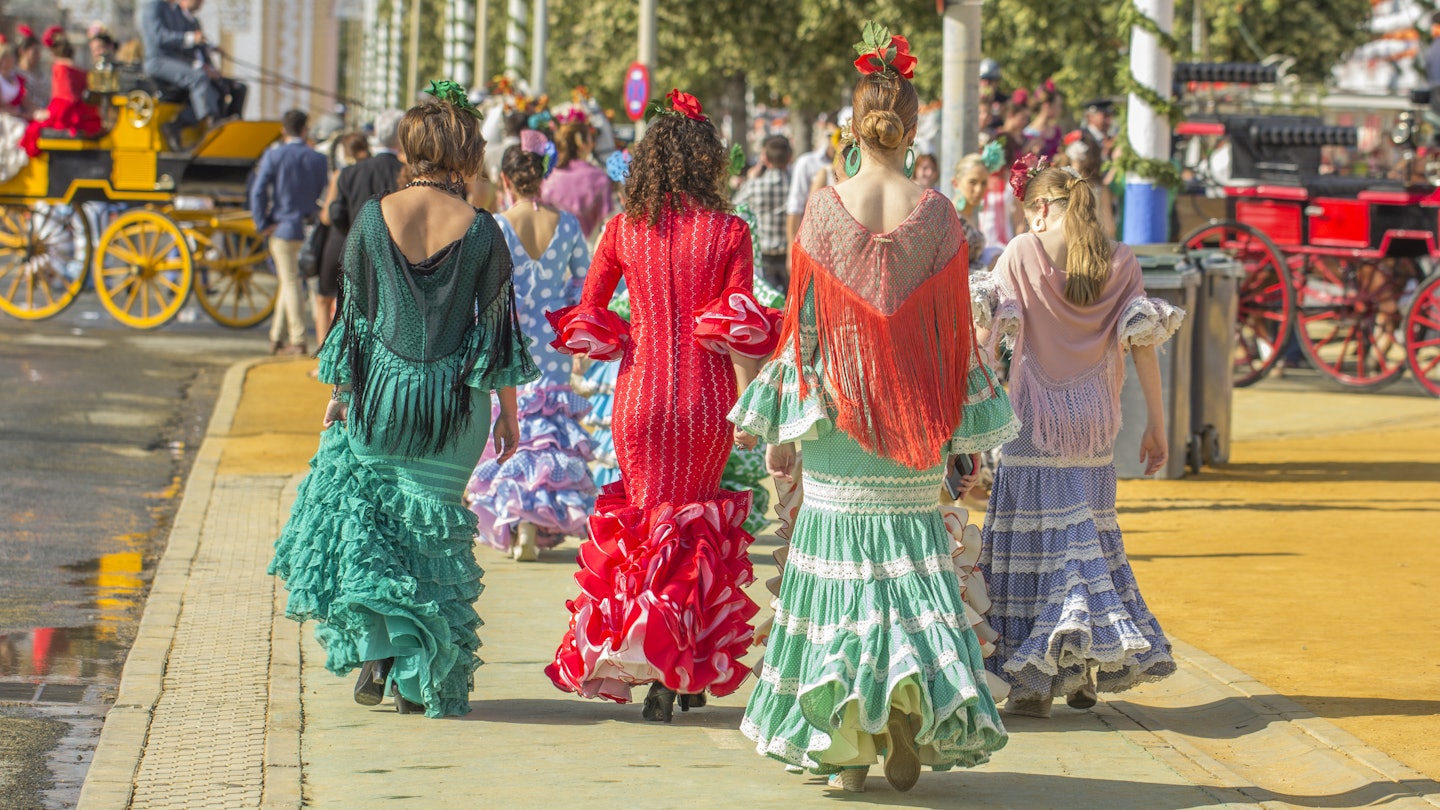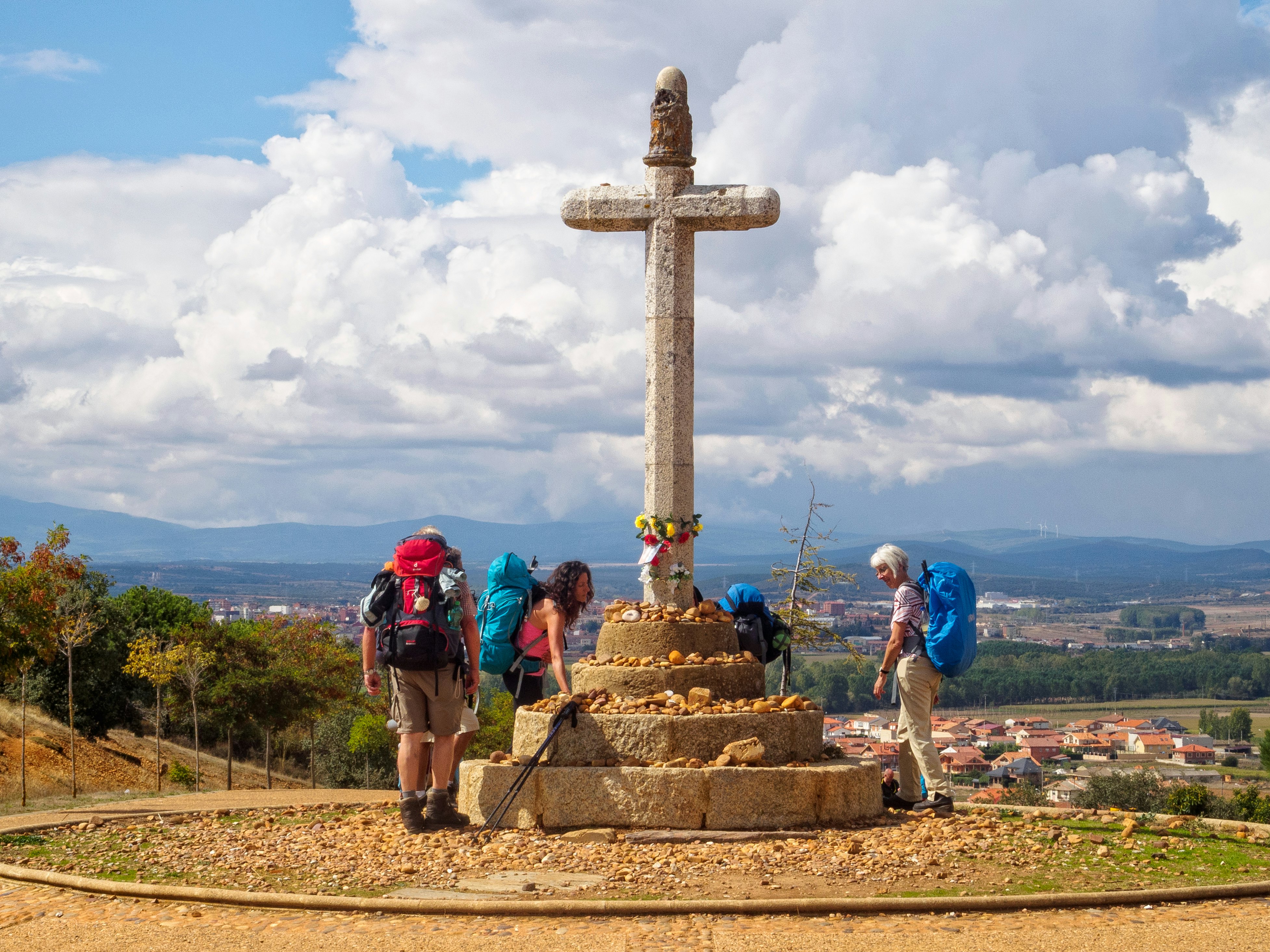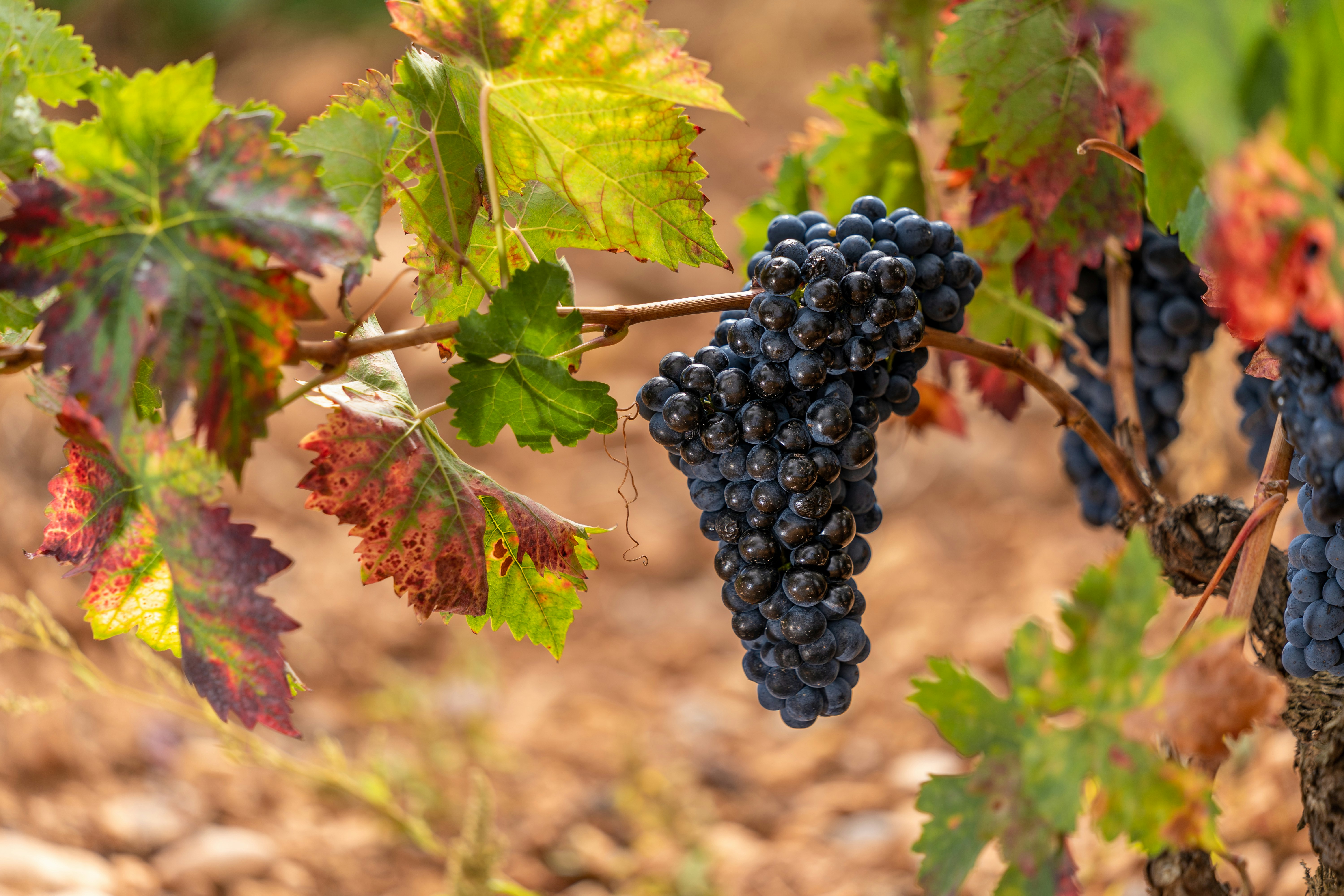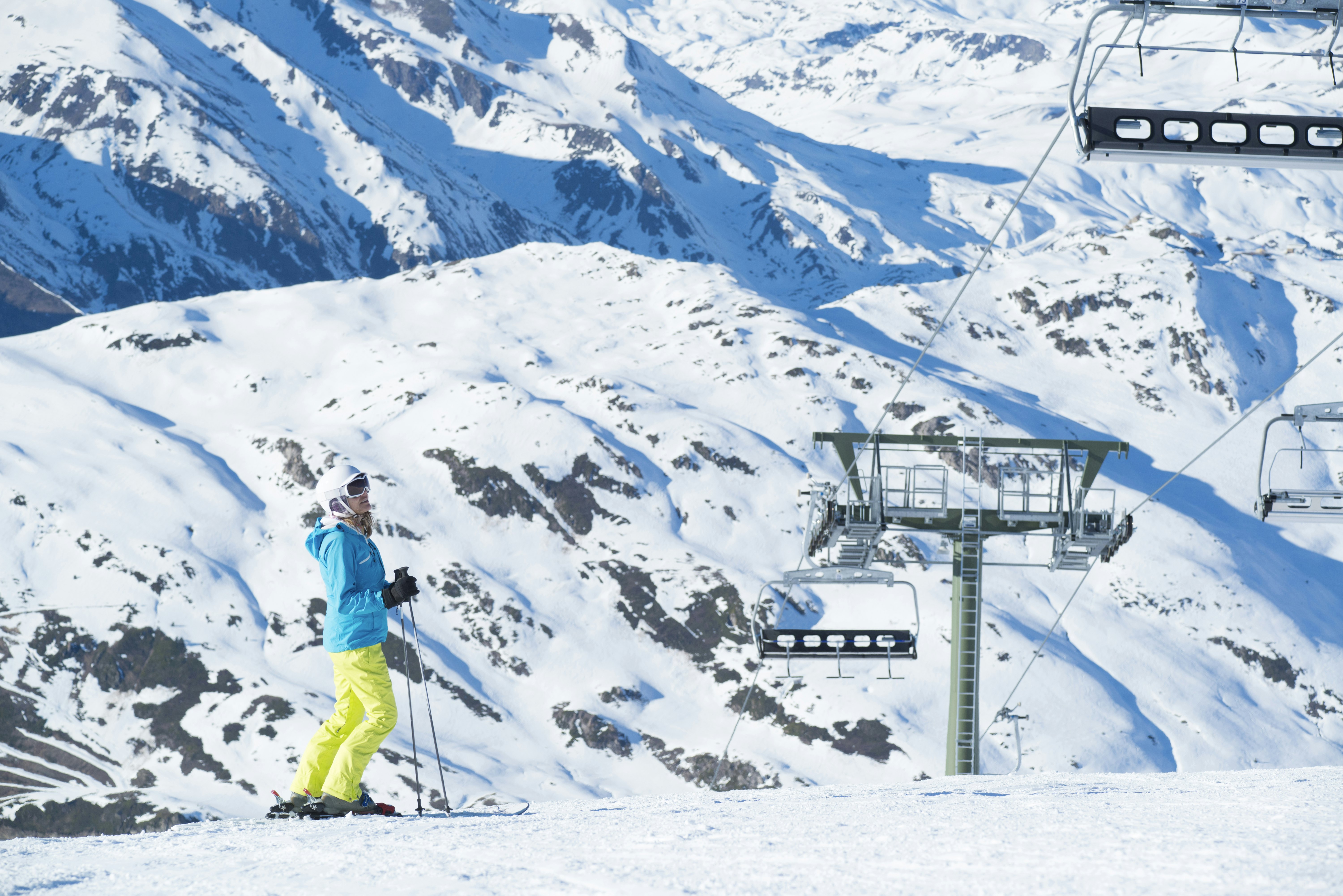
The Spanish calendar is full of lively festivals such as Feria de Abril in Seville. Carlos Amarillo/Shutterstock
Spain consistently ranks as one of the most-visited destinations in the world. This vibrant and multifaceted European country has attractions that resonate with every kind of traveler.
Whether you’re a culture enthusiast seeking to immerse yourself in art and architecture or Madrid's best museums, a sun worshipper looking for spectacular beaches and islands, a passionate gourmand embarking on a culinary tour or even a spiritual adventurer wishing to retrace the footsteps of medieval pilgrims, Spain is one of those rare destinations that offers a fascinatingly diverse range of experiences, season after season.
Before packing your bags, consider what you’re looking for in a visit to Spain and plan ahead. Are you traveling on a shoestring budget, or are you happy to splurge on shopping? Are you looking for the best time to soak up the sun on a sandy coastline? Or are you seeking an unforgettable cultural experience at one of Spain’s iconic festivals?
Whatever draws you to Spain, here are the best times to visit this fascinating Iberian destination.

Hit the beach from May to September
Spain is blessed with nearly 5000km (3107 miles) of coastline, stretching from the Atlantic Ocean to the Mediterranean Sea. Archipelagos in the Balearic Sea and off the northwestern coast of Africa cap off the country’s maritime allure.
When the weather starts warming up in the wake of spring, Spanish beach destinations come to life, hitting their peak in August. Ibiza reaches its full party atmosphere in July and August, when top DJs fly in to play in its world-famous clubs. If you wish to avoid crowded shorelines, try to visit in May and June before the high season crowds gather.
Be aware that the summer months of July to August can be scorching, with temperatures in central and southern Spain exceeding 40°C (104°F). Madrid empties out in August, as locals go on summer holidays and many establishments close to avoid the oppressive heat. These summer months are ideal for visiting the northern regions, such as Asturias, the Basque Country, Galicia, and Cantabria, which have milder temperatures.

April to May and September to October are perfect for spending time outdoors
In central Spain and on the Mediterranean coast, the spring and fall seasons are marked by sunlit days and pleasant weather that is perfect for strolling and outdoor dining at restaurant and bar terrazas (terraces), with temperatures cooling down by nightfall.
Spring and fall are also the best seasons for hiking in the Spanish Pyrenees, the Picos de Europa and the Sierra Nevada mountains, and in the volcanic hinterlands of the Canary Islands. These cooler months are also great times to explore the tangled streets of Spain's historic cities, towns and villages on foot.
Join the summer fiestas in Madrid in August
The Spanish capital empties out in August, as most madrileños escape the sweltering heat and head to the coast or the northern regions for cooler temperatures. Yet while the city looks empty by day, once the sun sets, Madrid’s remaining inhabitants come together for the annual festivals of San Cayetano, San Lorenzo and La Paloma in the La Latina and Lavapiés neighborhoods.
These three festivals come one after another, so these two adjacent neighborhoods are in fiesta mode for nearly three weeks in August and early September. It's a great time to enjoy open-air concerts, outdoor theater performances, and street food stalls, along with a vibrant atmosphere.

Walk the Camino de Santiago pilgrimage from April to May and September to October
The most popular period for walking this thousand-year-old pilgrimage route towards Santiago de Compostela is between May and September, for favorable weather and longer daylight hours. However, we recommend avoiding these busy months, and hiking during the spring and autumn shoulder seasons when trails are less crowded, offering a more tranquil and contemplative experience.
Enjoy Andalucía’s heritage cities, festivals and mild weather in April and May
There’s a reason the southern region of Andalucía is nicknamed la sartén de España ("the frying pan of Spain"). Forget coming here in the blazing summer months from June to August; instead, visit this region’s magnificent cities such as Seville, Córdoba and Granada in April or May, when the weather is pleasant, with temperatures between 18°C and 25°C (64°F to 77°F) during the sunny days, and cooler nights.
These months also coincide with the region’s iconic spring festivals – the Feria de Abril (April Fair) in Seville, a colorful celebration of flamenco, horse parades and traditional costumes, and the Courtyards Festival of Córdoba in May, when courtyards are bedecked with bright blooming flowers and lush greenery.

September to October is the best time for enjoying wine-harvest festivals
Oenophiles will enjoy visiting Spain’s most famous wine-making regions, such as La Rioja and Ribera del Duero, during the traditional harvest season that starts in September. Around September 21, Logroño, the capital of La Rioja, kicks off its San Mateo festival, where you can take part in grape-crushing, parades and, of course, exquisite wine tasting for astoundingly low prices per copa (cup).
For an off-the-tourist-radar experience, visit Valdepeñas in the Castilla-La Mancha region during the first week of September, when the entire town takes its love of vino to a whole new level with the annual harvest festival, featuring a wine tunnel and wine-tasting events in subterranean bodegas (wineries). There’s even a wine bus to take you home after a whole day of Dionysus worship.
Experience traditional cider season in the Basque Country from January to April
Cider is an essential part of Basque culture. After apples are harvested in the autumn, they’re stored in massive wooden barrels for fermentation. Come January, a ceremonial barrel opening marks the beginning of the season for visiting sagardotegiak (traditional cider houses), which runs until April, after which time the cider is bottled for commercial distribution.
Traditional celebrations are concentrated in Gipuzkoa, particularly in the town of Astigarraga, near Donostia-San Sebastián. From January to April, you can stop into centuries-old cider houses and drink cider straight from the barrel with the locals.

Attend music festivals around Spain from June to August
Many of the country’s biggest music festivals take place in the summer months. A diverse lineup of international acts gather at venues and outdoor stages across Spain to perform in iconic annual festivals such as Primavera Sound and Sónar in Barcelona (June), Mad Cool in Madrid and Bilbao BBK Live in Bilbao (July), and Rototom Sunsplash reggae festival in Benicàssim near Valencia (August).
November to February is the best time for budget travelers
Prices are generally lower for accommodations and flights during the cooler Spanish winter months. The cold season is actually a great time to bundle up and visit Madrid and Barcelona, which come alive with Christmas lights, outdoor markets and holiday festivities.
November to January is the best time to indulge in olive oil festivals
The annual olive harvest season is celebrated with olive oil festivals all over the country, especially in the regions of Andalucía and Catalonia. Check out the gastronomic agenda for the Martos Olive Festival in the city of Jaén, which takes place annually on December 8. In the village of Siurana near Tarragona, the Olive Oil Fair happens every November.

January to March are the best months for skiing
For fans of the great outdoors, Spain's ski resorts usually open in December and close right after Easter in April. Peak snow conditions run from January to March in the Pyrenees, and January to February in Central Spain. Surprisingly, the Sierra Nevada mountains near Granada in southern Spain have a longer ski season that can sometimes last until May.
Eat calçots in the Catalonian region from January to April
La Calçotada is a yearly gastronomic festival in the Catalonia region, where large groups gather to eat grilled calçots – a type of green onion harvested in the winter – dipped in delectable sauces. Restaurants in Barcelona and in the region around Valls are good places to track them down.
January to February and July to August are the best times to shop the sales
The traditional rebajas (sales) periods in Spain are regulated by the Spanish government to protect consumers and local businesses. These are usually held after Christmas and during summer holidays, when people have time to shop. During these winter and summer sales seasons, bargain hunters can stretch their shopping budget, as stores use this time to clear their inventory, offering significant discounts of up to 70% off normal prices.





